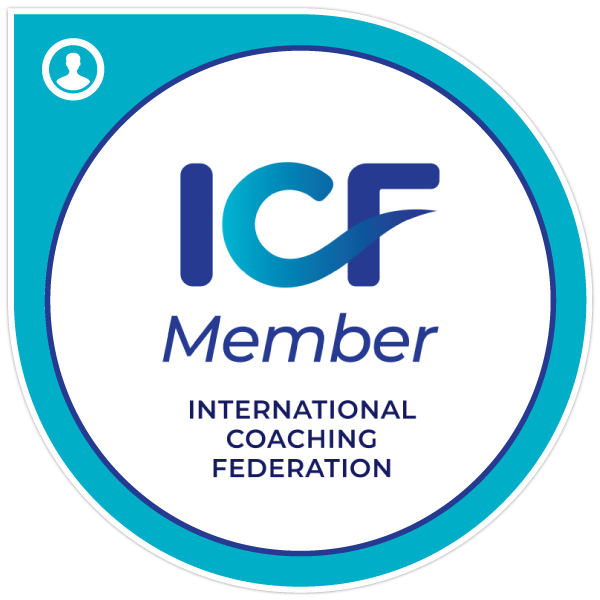Succession planning is a critical strategic process for ensuring the long-term health and stability of any organization. It involves identifying and developing future leaders to fill key roles within an organization, ensuring that the company remains strong even as inevitable changes occur. However, integrating leadership training into succession planning can present several complex challenges that companies must navigate carefully.
The first challenge lies in identifying and developing potential leaders. Not every employee is suited for leadership, and recognizing those who are, and more importantly, those who have the potential to lead, requires insight and strategic foresight. Secondly, it is crucial for companies to align their succession planning efforts with broader organizational goals. This alignment ensures that future leaders are prepared to steer the company in the desired direction.
Another significant hurdle is managing resistance to change. Changes in leadership can lead to uncertainty and discomfort among employees. Effective communication and involvement are necessary to ease these transitions and garner support for new leaders. Additionally, ensuring continuity and effective knowledge transfer when leadership changes hands is vital to maintain operational stability and retain valuable organizational knowledge.
Lastly, measuring and evaluating the effectiveness of succession planning programs is essential but often difficult. Companies must develop robust criteria to assess the impact of their leadership training and succession efforts to ensure they are producing capable leaders and achieving desired outcomes.
Addressing these challenges requires thoughtful planning and execution. By understanding and anticipating these issues, companies can develop more effective succession strategies that not only prepare the next generation of leaders but also align with and further the organization’s goals.

Identifying and Developing Potential Leaders
Identifying and developing potential leaders is a crucial challenge that companies face when implementing succession planning through leadership training. Succession planning is vital for ensuring that an organization has a continuous supply of capable individuals ready to fill key roles as they become available. However, the challenge lies in accurately identifying employees who not only have the potential to lead but also align with the company’s vision, culture, and strategic goals.
The development of potential leaders requires a systematic approach that includes comprehensive evaluation methods and tailored development programs. Companies must invest in robust training programs that focus on both the hard skills necessary for specific positions and the soft skills that leaders need, such as communication, strategic thinking, and emotional intelligence. This often involves a combination of formal education, mentorship, on-the-job training, and sometimes external coaching.
Another aspect of this challenge is the need for ongoing assessment to track the progress of potential leaders and ensure they are developing the necessary skills to take on leadership roles. This can be complicated by the subjective nature of some leadership qualities and the varying needs of different organizational roles. Additionally, companies must create an environment that encourages and rewards leadership behaviors, even in non-leader roles, to foster a culture of leadership development.
In conclusion, the identification and development of future leaders is a multifaceted challenge that requires thoughtful planning, dedicated resources, and a commitment to long-term development strategies. This is essential not only for the continuity of leadership within the company but also for maintaining competitive advantage and achieving organizational success.
Aligning Succession Planning with Organizational Goals
Aligning succession planning with organizational goals is a critical yet complex challenge faced by companies when implementing succession planning through leadership training. Succession planning is not just about filling imminent vacancies; it is about developing a robust framework that ensures the long-term success and sustainability of the organization. A key aspect of this process is ensuring that the leadership pipeline is in sync with the strategic objectives of the company.
One major difficulty in achieving this alignment is the dynamic nature of business strategies and goals, which may evolve based on market conditions, technological advances, and other external factors. Organizations need to ensure that their succession plans are flexible and adaptable enough to respond to these changes. This requires continuous reassessment and recalibration of the plan to ensure it remains relevant and aligned with the current business direction.
Moreover, organizational goals are not always clearly defined or communicated across all levels of the organization, which can lead to mismatches between the skills being developed in potential leaders and those required for future strategic objectives. To overcome this, companies must improve internal communication and ensure that the vision, mission, and strategic goals are well understood and embraced throughout the organization. This involves not only top-down communication but also fostering a culture of strategic thinking among potential leaders through targeted training programs that focus on the broader business context.
Additionally, there is often a challenge in balancing short-term needs with long-term objectives. While immediate operational demands may necessitate quick fixes, such as temporary leadership appointments, these must not detract from the long-term goal of developing leaders who can drive the company forward in alignment with its strategic goals. Therefore, a well-designed succession planning program should include both aspects, ensuring operational efficiency in the short term while building a foundation for strategic success in the future.
In conclusion, aligning succession planning with organizational goals is crucial for the effectiveness of leadership training programs. It requires a strategic approach, effective communication, and a balance between immediate needs and long-term aspirations. By focusing on these elements, organizations can enhance their ability to develop leaders who are not only capable of meeting current challenges but also driving future growth and success.
Managing Resistance to Change
Managing resistance to change is a significant challenge that companies face when implementing succession planning through leadership training. This resistance can manifest in various forms and come from different levels within an organization. It often stems from fear of the unknown, discomfort with new processes, or perceived threats to job security and established power structures. To address this challenge, organizations must first acknowledge that resistance is a natural human response and prepare strategies to manage it effectively.
One essential approach to managing resistance is through clear and open communication. Leaders should strive to be transparent about the reasons for changes, the benefits of succession planning, and how it will be implemented. It’s crucial to involve employees in the process as much as possible, giving them a sense of ownership and control over the changes. This inclusion can help mitigate fears and encourage a more accepting attitude towards the transition.
Additionally, providing training and support is vital. Employees need to feel equipped to handle new responsibilities and changes in leadership. Training programs should not only focus on the successors but also on those who might be indirectly affected by the changes. Ensuring that all employees have access to the necessary resources to adapt to new roles or changes in leadership can significantly reduce resistance.
Lastly, it is important to foster a culture of trust and support. When employees trust their leadership and feel supported in their roles, they are more likely to embrace change. Leaders should strive to be role models in the transition, demonstrating commitment to the new direction and showing empathy towards employees’ concerns and challenges. Building a strong, supportive culture can help smooth the transition during succession planning and reduce resistance significantly.
Ensuring Continuity and Knowledge Transfer
Ensuring continuity and knowledge transfer is a critical challenge that companies face when implementing succession planning through leadership training. This challenge revolves around the systematic approach to retaining essential knowledge within the company and making it accessible to new leaders as they step into their roles. The main goal is to prevent the loss of critical institutional knowledge and skills when key employees leave or retire.
One of the primary issues in this endeavor is the identification of critical knowledge—knowing what information is essential for the leadership to possess, which can vary from technical skills to strategic insights about the company’s operations and market dynamics. Once identified, this knowledge needs to be documented and transferred effectively, which can be a complex process, especially in organizations where knowledge is tacit and not readily codified.
Another aspect is the development of a culture that supports continuous learning and knowledge sharing. This involves creating an environment where employees are encouraged to share their expertise and insights openly, which can be facilitated through mentoring programs, workshops, and regular team meetings. Additionally, technology plays a crucial role in knowledge transfer, with tools such as intranets, collaborative platforms, and knowledge management systems being instrumental in supporting these efforts.
The effectiveness of continuity and knowledge transfer strategies can be significantly affected by how well they are integrated into the broader succession planning and leadership development frameworks. It requires careful planning, resource allocation, and ongoing evaluation to ensure that it not only supports the current leadership needs but also adapiles to the evolving demands of the organization.
In summary, ensuring continuity and knowledge transfer in succession planning is about more than just replacing personnel; it’s about preserving the organizational memory and fostering an adaptable and learning-oriented culture that can sustain company growth and competitiveness over time.
Measuring and Evaluating Succession Planning Effectiveness
Measuring and evaluating the effectiveness of succession planning is crucial for any organization aiming to ensure its leadership’s future stability and success. This process involves various challenges that can significantly impact the overall success of the succession planning initiative.
Firstly, determining the right metrics and KPIs (Key Performance Indicators) to measure the effectiveness of succession plans is a major challenge. Companies must identify which aspects of the succession plan are most crucial to their business goals and how these can be quantitatively and qualitatively assessed. Common metrics used might include the readiness of potential leaders to step into their designated roles, the performance improvements of these leaders over time, and the alignment of succession planning outcomes with strategic business objectives.
Another challenge is the collection of accurate and relevant data to evaluate these metrics. This data collection can be hampered by subjective biases, incomplete information, and the inconsistent application of evaluation criteria. Ensuring that the data is reliable and encompasses a broad spectrum of performance indicators is essential for an unbiased assessment of the succession planning process.
Furthermore, effectively communicating the results of these evaluations to key stakeholders is critical. Stakeholders not only include senior management but also the potential leaders who are part of the succession pipeline. Clear communication helps in managing expectations and provides valuable feedback for continuous improvement.
Finally, the dynamic nature of business necessitates continuous adaptation and flexibility in succession planning processes. What works today may not be effective tomorrow, and so the evaluation methods themselves must evolve. This requires ongoing attention and adjustments to both the succession planning strategy and its evaluation techniques to ensure they remain relevant and effective in promoting long-term organizational success.


Leave a Reply